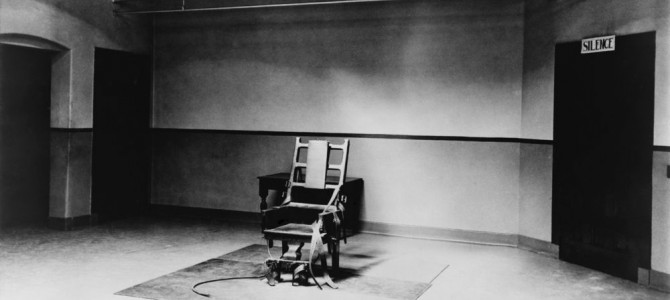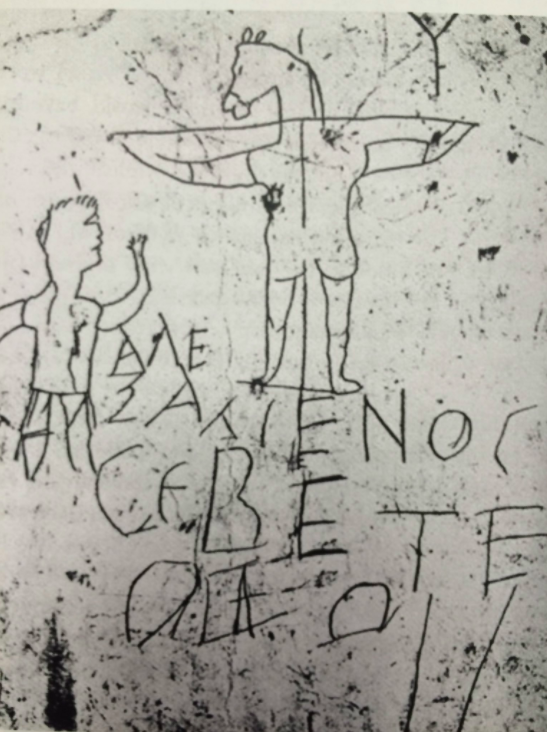
This week is the calendar’s most important week for Christians around the world, beginning with Palm Sunday to mark Jesus of Nazareth’s triumphal entry into Jerusalem. Huge crowds were stirred to praise Him, singing blessings in unison. In less than a week, the whole story had changed dramatically. Jesus became public enemy number 1. He was tried in a kangaroo court, then sentenced to a brutal death on a cross after being scourged with flesh-ripping whips by city officials.
Jesus’ humiliating and torturous death is remembered on what Christians have curiously referred to as Good Friday. By early Sunday morning, His tomb was empty, the Savior having been resurrected from the dead according to many witnesses.
It is important that everyone understand the fullness of what happened on Good Friday — Christians for their personal devotion and all others simply to understand and speak meaningfully on one of the most profound and consequential events in history.
To understand what happened on the cross, we must know what the cultural nature of a Roman cross was. Unfortunately, most Christians fail to understand the fullness of what it meant to be sentenced to die on a cross in those days. Have you ever heard a Christian writer, teacher or pastor say something like the following?
“When Jesus told those who would follow Him that they must ‘take up his cross daily,’ this was like telling people today to take up their electric chairs and follow Him.” Or, “For Christians to wear crosses around their necks is like us wearing a symbol of an electric chair.”
The analogy between the cross and an electric chair is intended to show that, while the cross has become a common and even sentimental symbol of Christianity today, in Christ’s day it was a harsh symbol of execution. Like an electric chair is today. But the comparison is also deeply flawed and reflects a total lack of understanding of what death on a cross actually was.
This comparison between the cross and “old sparky” was first made by an important theologian of the 1960s — Lenny Bruce. In a series of articles he authored in “Playboy,” later published in his 1967 posthumous book, “How to Talk Dirty and Influence People,” Bruce observed, “If Jesus had been killed twenty years ago, Catholic school children would be wearing little electric chairs around their necks instead of crosses.”
But the truth is, an electric chair and a cross are similar in only one way: each is designed to kill the worst of criminals. Otherwise, they are nothing alike. Let me explain.
The electric chair was created by the Thomas Edison in the late 1800s as a means to execute a prisoner more humanely with minimal suffering. Typically, the process — leading up to, during and following our executions today — is carefully scripted and implemented to make sure the criminal dies with some dignity.
The Roman cross was a whole other thing. It’s process was carefully designed and used to execute criminals in the slowest, most painful, agonizing and humiliating way possible, reserved exclusively for slaves, pirates and traitors and the like. Being such an unspeakably horrifying and degrading way to die, Roman citizens were not subjected to it. Anyone hanging on a cross was considered of no value whatsoever. Actually, worse though. They were considered a curse. When Paul wrote to the Galatians about the nature of Christ’s death, they knew exactly what he was talking about, because they knew what the cross signified.
“Christ redeemed us from the curse of the law by becoming a curse for us, for it is written: ‘Cursed is everyone who is hung on a tree.’” (Gal. 3:13)
The great Anglican preacher John Stott, in “The Cross of Christ,” quotes Cicero on how debased and unthinkable such a death was: “To bind a Roman citizen is a crime, to flog him is an abomination, to kill him is almost an act of murder: to crucify him is — What? There is no fitting word that can possibly describe so horrible a deed.”
The earliest known depiction of the crucifixion of Christ is a graffito scratched into stone just years after the Gospel was first preached in Rome. Seen here, it is a rough, mocking sketch of a crucified man, but with the head of donkey.

A young man — the object of the ridicule — has arm raised in reverent worship. The letters etched below read, “Alexamenos worships his god.”
The implication was not lost on the viewer of the day. It was a common statement of insult, portraying Christians as those who stupidly gave their lives in worship of a man who was an ass. Literally. For that was the only kind of man who was sentenced to death on a cross. The “Octavius,” a very early work of Christian apology, answers the common accusation made against Christianity: “The religion of the Christians is foolish, inasmuch as they worship a crucified man, and even the instrument itself of his punishment. They are said to worship the head of an ass …”
Everett Ferguson, in his “Backgrounds of Early Christianity,” explains the thinking behind this taunting and wild accusation. “As repulsive as the [Alexamenos graffito] is to Christians now, it conveys strongly how contemptible the idea of a crucified Lord was to pagan thinking,” he writes.
This very point was the artist’s crude belittlement of Alexamenos’ faith. How in the world could anyone’s god have died in such a way? It was beyond imagination, a compelling proof in itself that Christianity was false.
The following facts provide the worlds-apart contrast of the cross and the electric chair.
Those conducting an electric chair execution don’t do it as spectator sport, seeing how creatively and how long they can inflict the worst possible pain, suffering and humiliation while stalling death. This was precisely what execution on a cross was about. In fact, Pilate was surprised that it only took one day for Jesus to die on the cross.
Those dying in the electric chair are not presented publically for all to view as a means of cheap and base entertainment. The Roman cross was.
People put to death in electric chairs are not forced to carry their own means of execution to the place they will die. The crucified were required to.
Those walking their last steps to the electric chair are not taunted, spit upon, kicked, punched and verbally demeaned. The crucified were.
Those going to the electric chair are not brutally scourged to the point of substantial blood-loss as a lead-up to their electrocution. The crucified were.
People going to the electric chairs are not stripped completely naked and fully exposed to the crowd to make their death all the more humiliating. The crucified were.
People executed in electric chairs do not have their legs broken to finally bring death after days of suffering there. The crucified did.
Those executed in electric chairs are not left on display after death for all to see as a warning to other would-be criminals. The crucified were left that way for days, allowing the birds and wild animals to pick away at the corpse.
Those killed by the electric chair are given at least a modest burial. The crucified were denied burial, and what remained of their bodies was thrown away. (Joseph of Arimathea went to Pilate to get permission to have Jesus’ body for burial. He was granted such exceptional permission only because of his governmental influence and prestige.)
Yes, it is important that we remind fellow believers that the Cross of our faith was a device of death, torment and humiliation, a symbol of great offense. That is why the electric chair comparison falls short. As does the noose, the gas chamber or the lethal syringe.
There is no parallel symbol to speak of what the Christian Savior suffered and endured for each of us. And that is why the cross is the primary and universal symbol for that faith. It is a peerless and powerful reminder of the dramatic extent of Christ’s love.
God not only stepped down from His throne as King and Lord of all of creation, He suffered the most humiliating of deaths, reserved only for the lowest of the low, the sub-human. It doesn’t make any sense, and that is what makes Christianity unique and powerful beyond compare. If you don’t know this Jesus of Nazareth, this week is a great week to investigate who He truly is and what He did for you.









